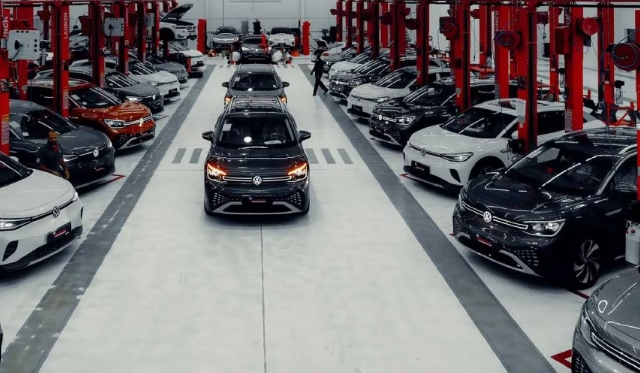New energy vehicles: 2025, change is in progress! In 2025, the automotive industry is undergoing unprecedented changes, and new energy vehicles are undoubtedly the protagonists of this change. From policy orientation to technological breakthroughs, from market structure to consumption trends, exciting changes are taking place in the field of new energy vehicles every day. Today, let us take a deep look at the latest developments of new energy vehicles in 2025.
- Continued policy efforts to protect new energy vehicles
The 2025 government work report clearly identified “vigorously developing intelligent networked new energy vehicles” as a key direction, continuing favorable policies such as purchase tax exemptions and old-for-new subsidies. In some areas, the subsidy for replacing new energy vehicles can be as high as 15,000 yuan, greatly reducing the cost of car purchases for consumers. Shanghai revised the license plate auction policy and lowered the threshold for social security payments to 1 year, further releasing potential consumption power.
Driven by policies, investment in the automotive industry increased by 23.6% year-on-year, reaching a record high in the past six years, demonstrating the firm confidence of capital in the new energy track. - Technological breakthroughs lead new energy vehicles to new heights
1 Power battery technology
Power battery technology is the key to the development of new energy vehicles and directly determines the vehicle’s cruising range and performance. At present, the mainstream power battery is mainly lithium-ion batteries. Major car companies and scientific research institutions continue to explore high-energy density batteries, such as solid-state batteries, and have made important progress in research and development. Compared with traditional liquid lithium-ion batteries, solid-state batteries have higher energy density, which can significantly improve the vehicle’s cruising range. At the same time, they are also safer and can effectively reduce risks such as battery thermal runaway. In addition, great progress has been made in battery fast charging technology. From the past 1 hour to fully charge, it has been optimized to now only take 15 minutes to complete 80% of the charge, greatly improving the charging efficiency.
2 Electric drive system
The electric drive system includes components such as motors and controllers, which are like the “heart” and “brain” of new energy vehicles. High-efficiency motors such as brushless DC motors (BLDC) and permanent magnet synchronous motors (PMSM) are widely used in new energy vehicles with their high operating efficiency, high density and wide speed range. As an important part of the electric drive system, the inverter is transforming from silicon-based devices to silicon carbide (SiC) and gallium nitride (GaN) devices. This transformation can significantly improve energy efficiency and reduce energy consumption.
3 Intelligent networking technology
Intelligent networking technology makes new energy vehicles no longer a simple means of transportation, but a “smart mobile terminal”. Through the further application of 5G technology and Internet of Vehicles, new energy vehicles can realize functions such as intelligent driving assistance, remote control, vehicle-to-vehicle (V2V), and vehicle-to-infrastructure (V2I). For example, the intelligent driving assistance system can realize functions such as automatic following, lane keeping, and adaptive cruise control, which improves driving safety and convenience; the remote control function allows users to remotely control the vehicle’s start, air conditioning, charging and other operations through mobile phones and other terminals; Internet of Vehicles technology enables vehicles to obtain traffic information in real time, optimize driving routes, improve traffic efficiency and reduce energy consumption. - Market structure reshaping, new growth momentum emerging
From the demand side, new energy vehicles have successfully shifted from “policy-driven” to “market-driven”. The sales growth rate of extended-range hybrid models will reach 103% in 2024. Brands such as Ideal and Wenjie rely on the “extended-range” solution to accurately cover the long-distance travel needs of family users. The sinking market has become a new growth pole. With the continuous improvement of the county charging network, the penetration rate of new energy vehicles in third- and fourth-tier cities has accelerated.
Consumer cognition is also undergoing a profound change. 100,000 yuan-class models such as BYD Seagull and Wuling Bingo have seized the commuter market with high cost performance; in the high-end market above 300,000 yuan, Weilai and Denza have established brand premiums through smart cockpits and battery replacement services. According to data from the China Association of Automobile Manufacturers, new energy passenger vehicles accounted for 76% of the global share in 2024, and the concept of “technology is luxury” for Chinese domestic cars is gradually being recognized by the global market.
If you are also attracted by the charm of new energy vehicles and want to experience the new travel experience brought by new energy vehicles, you might as well consider Tesla Model Y. It not only has a stylish appearance and spacious interior space, but also has an ultra-long range and an excellent intelligent driving assistance system. If you buy it now, you can also enjoy the relevant subsidy policies of the country, which greatly reduces the cost of buying a car. In addition, some regions also offer trade-in activities, allowing you to easily start a green travel life with new energy vehicles. Don’t hesitate, seize the opportunity, join the big family of new energy vehicles, and drive towards the future together!
















Leave a Reply